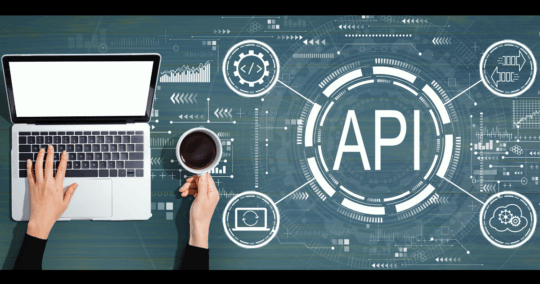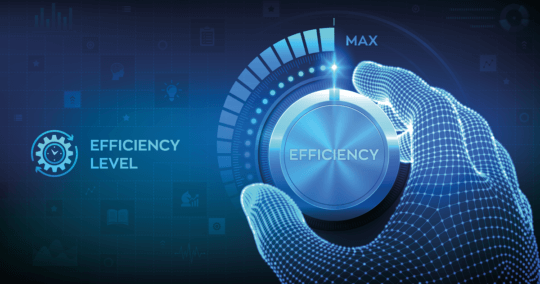API in Action: Self-Services
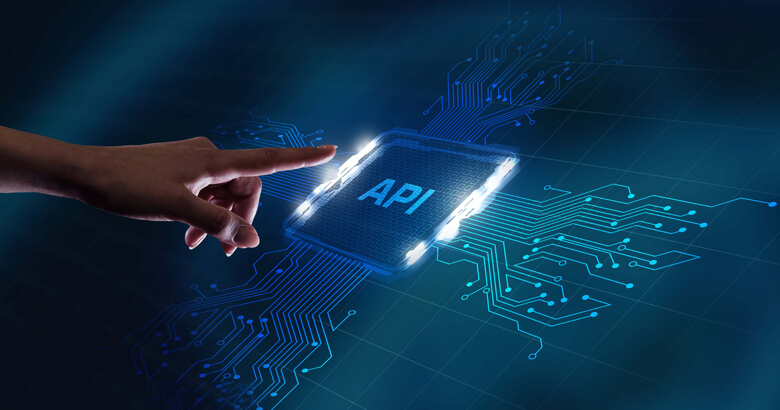
Beside the product portfolio itself, digitalization and digital processes is one significant pillar of a modern IT integration team. Web-based platforms like for travel booking or requesting vacation are booming, because people can interact with their service provider 24/7 in real-time with no need to organize meetings or wait for anyone.
SEEBURGER BIS comes with standardized web-based applications for users like Message Tracking or the API Catalog. To close the gap between standardized apps and individual company-specific organization or processes, additional solutions are needed.
To support the global integration community 24/7 in raising requests with all details required when they need a new interface, the IT Integration Team at ams OSRAM has introduced the “Interface Configuration Self-Service”. This is based on the SEEBURGER BIS Community Management Application. It is placed on top of the agenda of the monthly Integration Community Meeting and the ongoing information campaign.
Using the Interface Configuration Self-Service, users can intuitively pick a configuration type and the communication technology, then fill in the minimal information required to automatically create, modify or delete an interface. The IT integration team can get involved with an approval step in between.
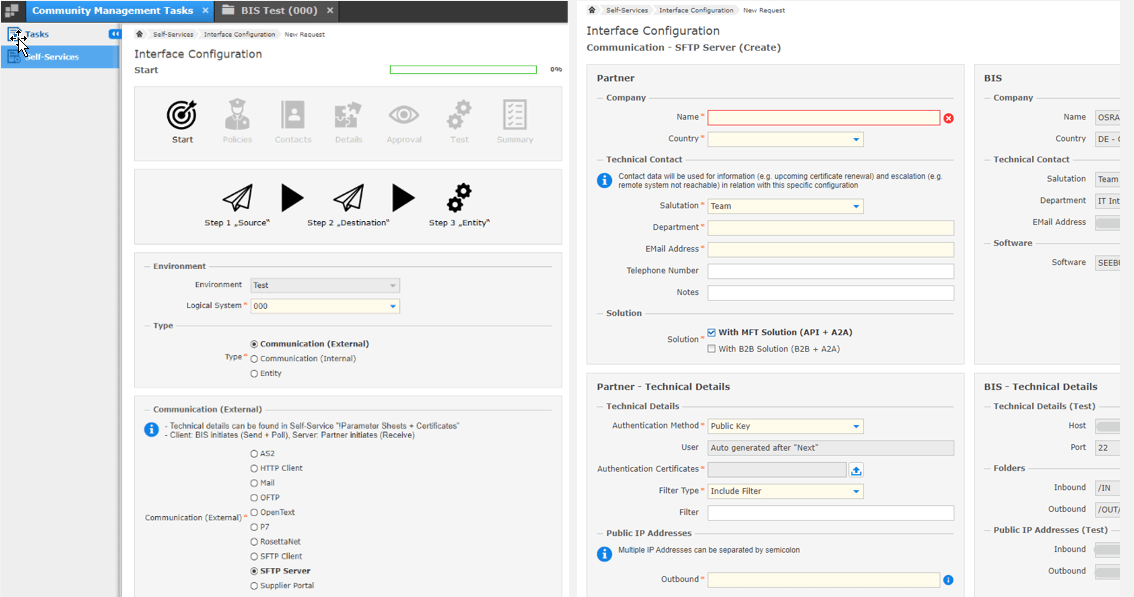
Once a criterion has been picked from a list (e.g. type of configuration), the system automatically adjusts the number of options available for the next criteria (e.g. communication technologies).
Based on the result users can directly use the configuration and align with business partners or administrators of remote systems on the next steps. In addition, a positive side effect is that IT integration team members can focus on supporting users that need more help.
Expectations of the Integration Community
Since we have been using SEEBURGER BIS as an all-in-one integration platform for all integration patterns, such as B2B/EDI, A2A/EAI or API, the IT integration team at ams OSRAM IT Integration Team has to be able to collaborate very closely with their internal customers.
The global integration community expects to have a simple, reliable and high-performing option, and to configure interfaces in real-time with reporting and analyzing tools and a positive user experience. Users of the self-service should not have to wait, nor receive any error messages due to backend unavailability. They expect to receive up-to-date information with no barrier in between.
Technical Solution
The ams OSRAM IT Integration Team quickly decided to provide the Self-Service with Community Management Application (CMA) and the Remote Access APIs on SEEBURGER Business Integration Suite (BIS) and build it as an end-to-end solution. The forms in the Community Management Application as well as the API/EAI Standard Solution configuration and the mappings were developed in parallel, to speed up and work on the GUI development and on integration setup in parallel.

The Business Integration Suite as an “all-in-one solution” provides the option to receive and answer requests from the Interface Configuration Self-Service via HTTP in real-time. Inside the body or the envelope of the HTTP call respectively, the integration capabilities of the BIS API/EAI Standard Solution perform a call to the BIS Remote Access APIs and transform it into a valid master data configuration in BIS.

Dozens of user requests per month can be transformed into well-structured information flows without email ping-pong or delays. To ensure both a small footprint and good performance of these services at the same time, processing is running in-memory, but still with the capability to analyze the result within the BIS Message Tracking.
Advantages and challenges of using Communication Management Application and Remote Access APIs
Compared to building self-services with separate solutions or products, using Community Management Application and Remote Access APIs from SEEBURGER has the following advantages:
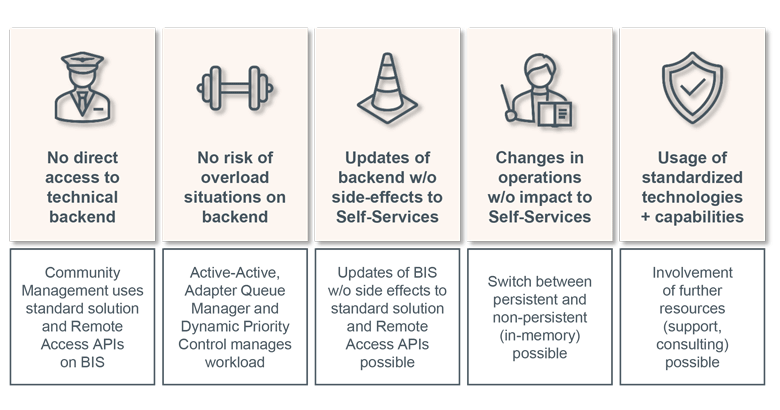
When we are talking about dealing with inquiries 24/7, the challenge is to offer applications, APIs and other integration patterns with zero downtime. This means no planned or unplanned downtime. The Business Integration Suite at ams OSRAM was designed as a highly available solution build with SEEBURGER BIS Active-Active clustering and DataStore. This means all components and services have inbuilt redundancy and even – compared to host-based or storage-based mirroring – the ability to pay attention to transactions within the SEEBURGER BIS.
What’s next?
To further increase efficiency of the IT integration team, additional activities for structuring and automating need to be identified. Factors for prioritization could be the level of effort, benefits, criticality or frequency. Overall target is:
| Structure tasks | Reduce need for user support and wait time |
| Ensure Data Quality | Avoid mail ping-pong (especially over time zones) |
| Combine Tasks | Handle related activities (technical + organizational / inside and outside integration platform) with one self-service (e.g. SFTP client creation + creation of scheduler task or request expected transfer volume + AS2 creation) |
| Simplify Tasks | Avoid requesting irrelevant technical details and using confusing terms |
| Perform Tasks w/o specialists | Allow execution of standardized tasks completely without the IT Integration Team or just add an approval step in between |
| Force 4-eyes-principle | Let multiple people (even outside the IT integration team) check a configuration |
Thank you for your message
We appreciate your interest in SEEBURGER
Get in contact with us:
Please enter details about your project in the message section so we can direct your inquiry to the right consultant.
Written by: Oliver Rupprecht
Oliver Rupprecht works for OSRAM since 1995 and deals with Business Integration and the digital change since 2001. He is responsible for the global integration platform at ams OSRAM and supports on consulting, conception and realization of integration demands.



